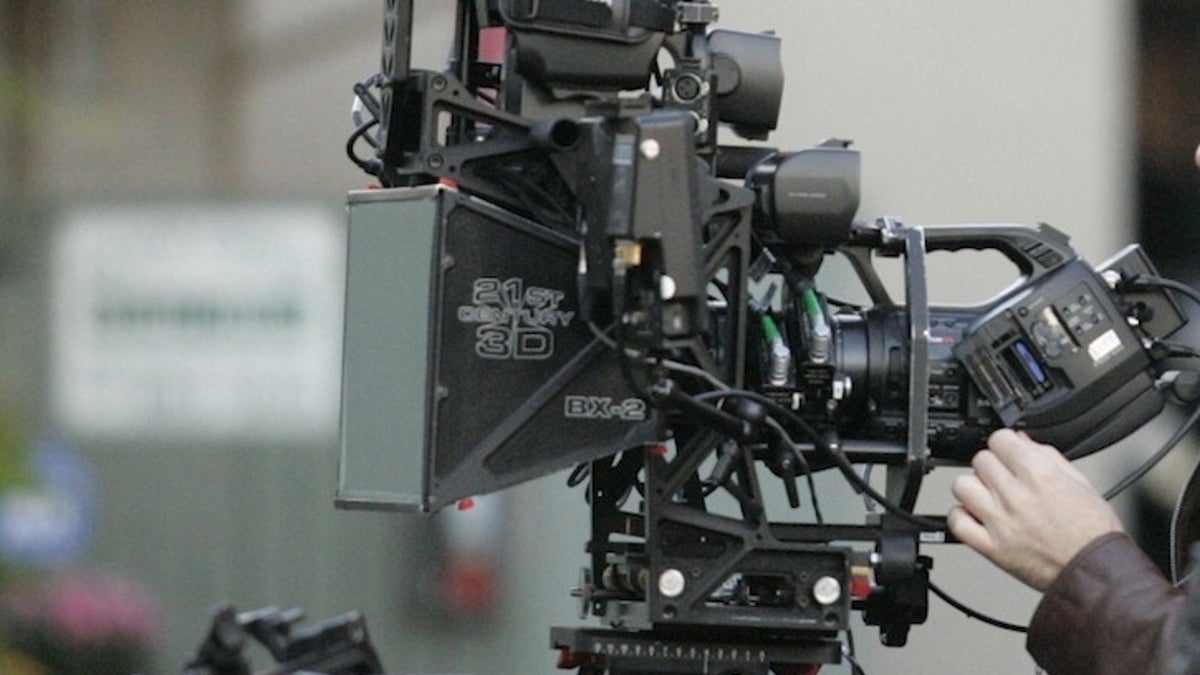How 3D TV is going to change the look of 2D shows
As 3D sets proliferate, TV producers have to tailor the way they film shows -- which may mean subtle but significant changes to 2D versions.

SAN FRANCISCO--Despite the relative dearth of 3D television programming, sales of 3D TVs are on the rise. But for those who make that programming, the biggest challenge of all may be simultaneously producing 2D versions of the same shows.
On a recent Tuesday, I had the chance to visit the Treasure Island set of "I (Almost) Got Away with It," an Investigation Discovery (ID) channel program about fugitives' near escapes from the law that's made by Indigo Films.
Although most people who watch the show do so in normal 2D, Indigo has recently been shooting a 3D version of it at the same time for 3Net, the 3D programming joint venture owned by Discovery, Imax, and Sony. 3Net is aiming to be among the earliest to take advantage of growing sales of 3D TVs.
In a recent study, NPD reported 6.6 million sales of the new TVs in the third quarter, up 27 percent from the previous quarter. But NPD also said that there is a "lack of 3D content and services" available to those buyers.
And that's where production companies like Indigo Films, which have been creating the content that will fill 3Net's schedule, come into play. According to David Frank, Indigo Films' president and executive producer, ID asked Indigo to start making 3D episodes of "I (Almost) Got Away with It," but didn't want that new production to impact the filming of the 2D version. So Frank's mandate became producing the two in tandem.
You might think that means filming the 3D version and then going back and doing it again in 2D. Or vice versa. But Frank said that's not the case at all. Rather, his team had to figure out how to shoot both versions at the same time.
In truth, Frank told me as we watched the filming of an episode about Mexican authorities' capture of some drug suspects, shooting the 2D and 3D versions isn't really the hard part. That's because the 3D content is shot in stereo using two normal cameras placed alongside each other. In order to create the 3D version, the film from both cameras is used. For the 2D, only one is used.
But there are a series of informal rules that govern 3D content, Frank explained, such as how long a single shot can go. Go too long and audience members may start to feel ill. So while the cameras may be the same, the need to adhere to these guidelines are likely to start affecting the shots used even in the 2D versions of shows. And if that's true, those watching the legacy versions of shows may begin to see shorter and shorter scenes as directors attempt to avoid giving 3D viewers headaches or nausea.
Another difference 2D viewers may see is more wide or medium shots, which are better for 3D programming. While a traditional shot may include a close-up of something like a pen, the 3D version doesn't need to do that. Rather, a wider angle of the pen may do the trick, Frank said.
At the same time, the ideal pacing of 3D shows is likely to be different than that of 2D versions, with 2D shows going at a faster pace and 3D scenes unfolding more slowly in order to allow the magnitude of the wider shots to impact the audience, Frank explained.
One way to implement that is to use different music scores. As a result, those watching the same show in 2D and 3D will likely see all the same footage, and the same script will be used, but the different versions will feature music scores set to the different speeds of the two versions.
"For 2D, the regular version, it's fast paced editing," said Frank. "It will have fast music, maybe with rock and roll, or drums...With 3D, you'll have a wide shot, with the trees or the street popping, and you hold on the shots. So the editing is slower, and the pacing is slower. And the music is a slower beat."

